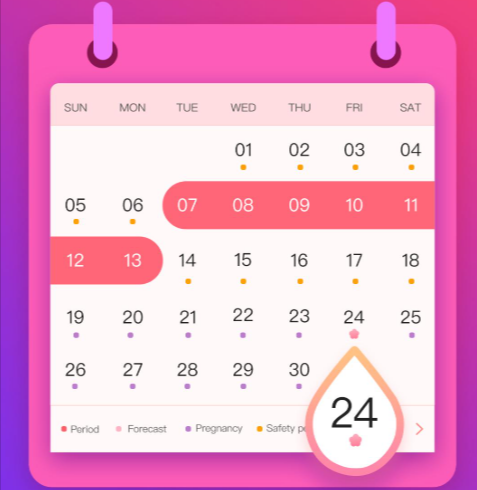Insulin glargine
What is insulin glargine?
Insulin glargine is a long-acting insulin used to treat type 1 and type 2 diabetes in certain patients to improve and maintain blood glucose levels. Insulin glargine is a man-made form of human insulin that is used once daily to provide a base level of insulin that keeps working for 24 hours or longer.
Insulin glargine is available under the brand names Lantus, Basaglar, Toujeo, Semglee, and Rezvoglar.
Rezvoglar, Lantus, Semglee, and Toujeo are FDA-approved to be used for use in adult and pediatric patients with type 1 and type 2 diabetes. Basasglar is FDA-approved to be used by adults for type 2 diabetes and also for adults and pediatric patients with type 1 diabetes. In patients with type 1 diabetes, insulin glargine must be used together with a short-acting insulin.
Insulin glargine side effects
Common insulin glargine side effects may include low blood sugar, swelling, weight gain, allergic reaction, itching, rash, or thickening or hollowing of the skin where you injected the medicine (lipodystrophy).
Serious insulin glargine side effects
Get emergency medical help if you have signs of insulin allergy: redness or swelling where an injection was given, itchy skin rash over the entire body, trouble breathing, fast heartbeats, feeling like you might pass out, or swelling in your tongue or throat.
Insulin glargine may cause other serious side effects. Call your doctor at once if you have:
- rapid weight gain, swelling in your feet or ankles;
- shortness of breath; or
- low blood potassium–leg cramps, constipation, irregular heartbeats, fluttering in your chest, increased thirst or urination, numbness or tingling, muscle weakness or limp feeling.
Before taking this medicine
You should not use insulin glargine if you are allergic to insulin, or if you are having an episode of hypoglycemia (low blood sugar) or diabetic ketoacidosis (call your doctor for treatment).
Different brands of insulin glargine are specifically approved for different age groups and different diabetes types. The safety and effectiveness of insulin glargine in pediatric patients younger than 6 years of age with type 1 diabetes and pediatric patients with type 2 diabetes has not been established.
Tell your doctor if you have ever had:
- liver or kidney disease; or
- heart failure or other heart problems.
Tell your doctor if you also take pioglitazone or rosiglitazone (sometimes contained in combinations with glimepiride or metformin). Taking certain oral diabetes medicines while you are using insulin may increase your risk of serious heart problems.
Pregnancy
Tell your doctor if you are pregnant or plan to become pregnant, as it is not known if insulin glargine will harm your unborn baby. Follow your doctor’s instructions about using this medicine if you are pregnant or you become pregnant. Controlling diabetes is very important during pregnancy.
Breastfeeding
Tell your healthcare provider if you are breastfeeding or are planning to breastfeed, as it is not known if insulin glargine may harm your breastfeeding baby.
How should I use insulin glargine?
Follow all directions on your prescription label and read all medication guides or instruction sheets. Use the medicine exactly as directed. Ask your doctor or pharmacist if you don’t understand how to use an injection.
Prepare an injection only when you are ready to give it. Do not use it if the medicine looks cloudy, has changed colors, or has particles in it.
Insulin glargine is injected under the skin, using a syringe or insulin pen, once per day at the same time of day.
Insulin can be injected into your upper legs (thighs), upper arms, or stomach area (abdomen). Do not inject into the same place two times in a row. Avoid injecting into skin that is damaged, tender, bruised, pitted, thickened, scaly, or has a scar or hard lump.
When treating type 1 diabetes, use your short-acting insulin before meals as directed by your doctor.
Insulin glargine must not be given with an insulin pump or mixed with other insulins. Do not inject insulin glargine into a vein or a muscle.
Your dose needs may change if you switch to a different brand, strength, or form of this medicine. Avoid medication errors by using only the medicine your doctor prescribes.
If you use an injection pen, use only the injection pen that comes with insulin glargine. Attach a new needle before each use. Do not transfer the insulin from the pen into a syringe.
Never share an injection pen, even if you changed the needle. Sharing these devices can pass infections from person to person.
Blood sugar can be affected by stress, illness, surgery, exercise, alcohol use, or skipping meals.
Low blood sugar (hypoglycemia) can make you feel very hungry, dizzy, irritable, or shaky. To quickly treat hypoglycemia, eat or drink hard candy, crackers, raisins, fruit juice, or non-diet soda. Your doctor may prescribe glucagon injections in case of severe hypoglycemia.
Tell your doctor if you have frequent symptoms of high blood sugar (hyperglycemia), such as increased thirst or urination. Ask your doctor before changing your medication dosage.
Wear a medical alert tag or carry an ID card to let others know you have diabetes.
Insulin glargine is available as:
Basaglar 100 units/mL is available as Basaglar KwikPen 3 mL, BasaglarTempo Pen
3 mL
Lantus 100 units/mL is available as a Lantus multiple-dose vial 10 mL, Lantus SoloStar prefilled pen 3 mL
Rezvoglar 100 units/mL available as Rezvoglar KwikPen prefilled pen 3 mL
Semglee 100 units/mL available as Semglee multiple-dose vial 10 mL, Semgleeprefilled pen 3 mL
Toujeo 300 units/mL available as Toujeo SoloStar prefilled pen 1.5 ml, Toujeo Max SoloStar 3 mL prefilled pen
Interaction
Health Tools
Related/Similar Drugs
Dapagliflozin
Home What is dapagliflozin? Dapagliflozin is a prescription medication that is mainly used alongside diet and exercise to help treat […]
Insulin glargine
Home What is insulin glargine? Insulin glargine is a long-acting insulin used to treat type 1 and type 2 diabetes in certain […]
Sitagliptin
Home What is sitagliptin? Sitagliptin is used with diet and exercise to improve blood sugar control in adults with type […]
Metformin
Home What is metformin? Metformin is an FDA-approved antidiabetic agent that manages high blood sugar levels in type 2 diabetes […]
Glimepiride
Home What is glimepiride? Glimepiride is an oral diabetes medicine that is used together with diet and exercise to improve […]




